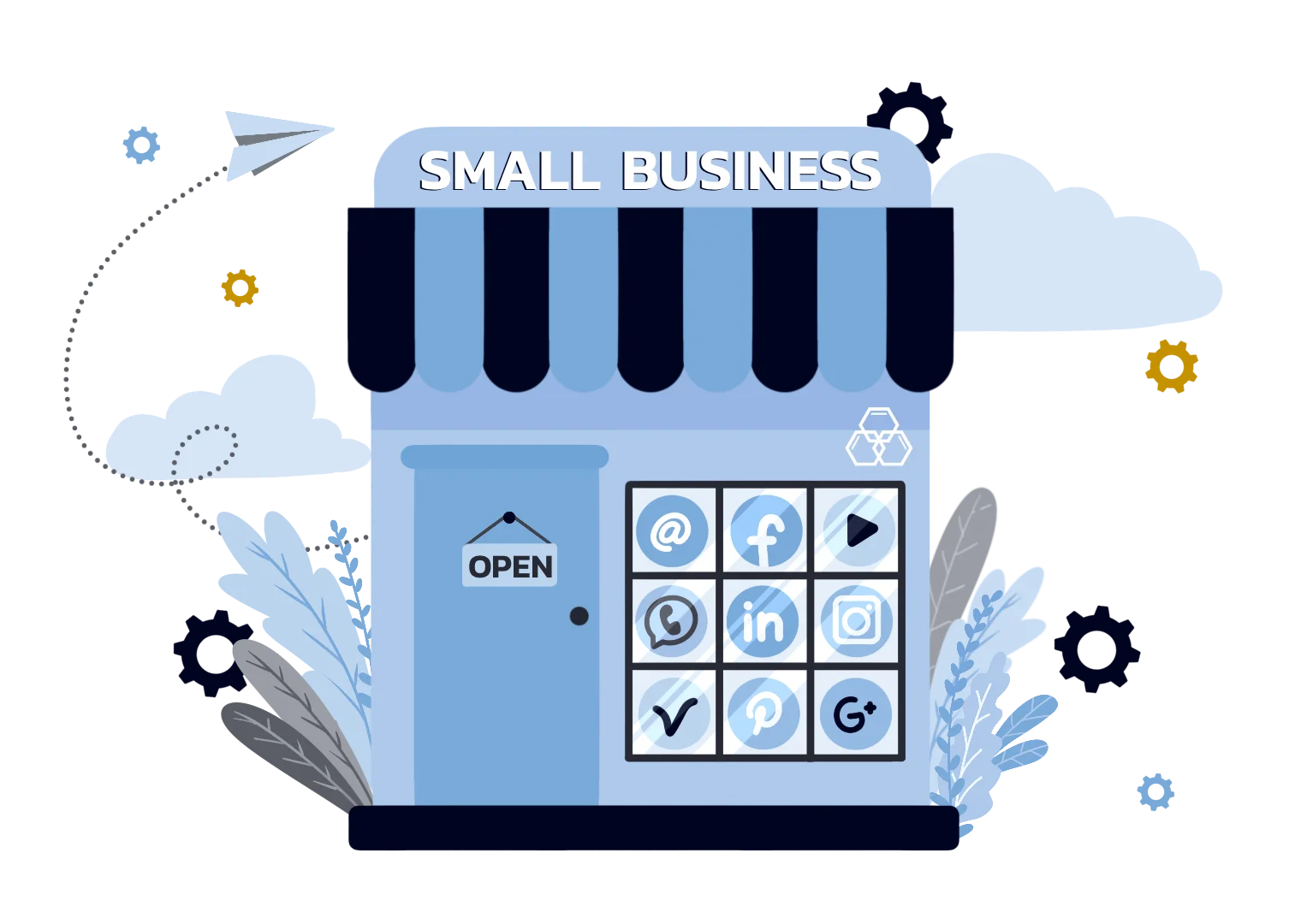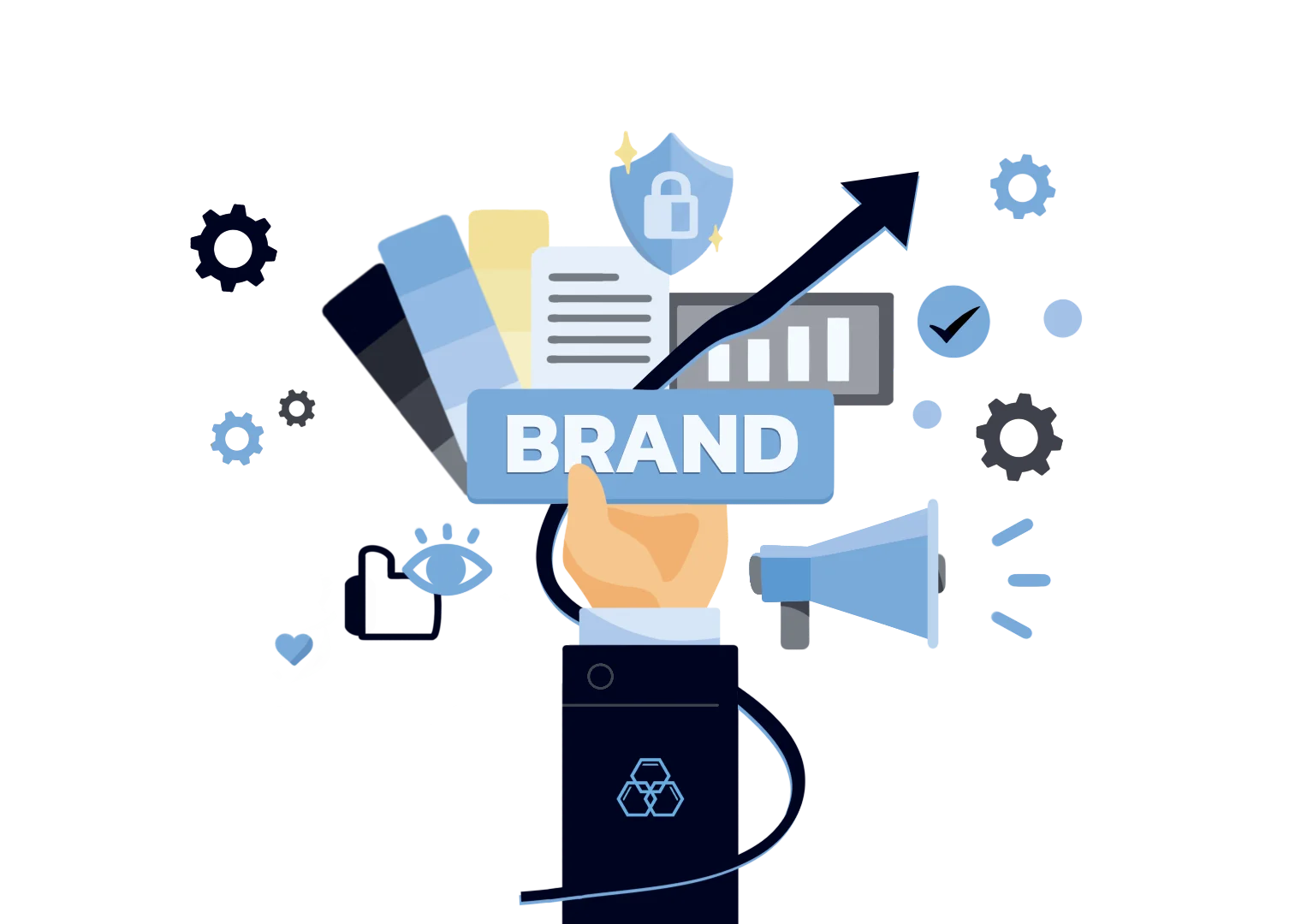Why is it important to brand your business?
At the end of the day, a business must keep operations running, employees paid, delivering delight to their existing customers, all while being profitable. A consistent and expected source of revenue helps make sure that's possible. This is where strong branding can have a long-term advantage over a competitor.
The word branding tends to be an annoying buzzword to business owners because people use it by mistake whenever they are talking about a logo, colors, or aesthetics. Those elements are called your visual identity. The visual identity of a company is just one tool that a team of experts uses to create a strong brand identity. Let's take the romance out of the word branding for a moment here and be candid.
"Branding is a way to get more people to buy more stuff, for more years, at a higher price." - Marty Neumeier, Author.
Business branding is a powerful tool that should be in every small business' marketing objectives. Brand strategy is crucial in predicting how a potential customer will feel and react at all points in the sales funnel.
Why invest in branding?
First, let's answer the why question. Why go deeper into investing in a quality brand? Two words, brand equity, customer loyalty, public consent. Regardless of which two-word combination you like, they all result in increased revenue. Here's How:
Brand Equity: This is the perceived worth and added value that your brand provides to a product or service outside the scope of its natural benefits. That's why so many high school football athletes get excited when they have a tiny swoosh on the upper right corner of their jerseys even though it fundamentally doesn't make them play better. It's why people will spend hundreds of dollars at a restaurant and brag about it to their friends without even mentioning the food quality. That swoosh makes the jersey feel more professional. The sophisticated atmosphere implies extravagant food, right? Brand equity is what helps businesses add a brand tax to all their products and services.
Customer Loyalty: Over time a business starts to subconsciously develop expectations in the minds of their existing customers. This ever-evolving, internal brand promise is the ultimate result of an effective branding strategy. Loyal customers will be more likely to become early adopters of a company's new products or services.
Public consent: Having a community that supports a business can often be the difference between closing down or enduring tough economic times. A great brand image takes the stress away from new customers doing business with a company. The buzz around a business owner or local company also helps drive more traffic and brand awareness.
All the elements of an established brand.
A professionally designed brand is often seen as "a luxury we can't afford" to many small companies due to requiring expensive designers from prestigious backgrounds with sophisticated tastes. But it doesn't have to be that way. Whether you choose to tackle branding alone, with a designer, or with a branding agency, there are six key branding elements every business can start improving on today, and all don't require a fancy designer. But if you do need a branding agency, we have you covered!
Actions Taken: Reinforces commitments.
How a company decides to do business as usual has a large impact on how it will be perceived by the general public. A company can say they are green but if operations prove otherwise, they can and will lose serious support. With that being said, many companies do amazing things for the environment and their communities but fail to get any reasonable amount of brand recognition, especially small business owners. For example, with $100 worth of advertising spend on Instagram, a company's goodwill for the community could be leveraged into branding efforts which would be seen by no less than 10,000 people that are within 50 miles of your business. If you need help on getting started with local business advertising we have you covered!
Visual Identity: Reinforces brand value.
Visual identity is the most exciting and talked about part of branding a business. That's why it's often the only thing people think of when branding comes up.
Visual identity includes:
- Logo
- Color Scheme
- Photography
- Graphic elements
- Typography
- Packaging
- Materials & textiles
A business' visual identity is responsible for brand recognition and depending on the business, each item they sell could have its own product branding which means its own visual identity.
Use visual identity systems to improve brand consistency.
It's important to have all your brand assets ready and accessible for your employees whenever they need them. This includes easy to print marketing material for sales teams, brand guidelines for your designers, brand experience & customer journey maps for customer support teams.
Industry: Reinforces Expertise
What your business does and where it does it plays an important role in public perception. It's vital to understand the industry you're in and how to provide unique experiences. You need to be informed in order to stay up-to-date with the current trends and avoid appearing out of touch when you're trying to appeal to a modern audience.
Ensure that your brand acts as an asset to the company rather than an image on paper or online. You want to gain that reputation of being an important player in the industry. A good example in the digital modern age is The North Face, an American clothing brand, who advertise their products as exclusive and high-quality. However, they do so without using conventional marketing tactics by focusing on real outdoor enthusiasts rather than models.
Reputation: Reinforces Trust
A good reputation is at the heart of every successful brand. Whether they know it or not, people are constantly talking about brands and how it makes them feel. Interactions with companies are part of everyday life and whenever a business has a new interaction with a customer it provides a great opportunity to build your reputation. Whether you're proactively working on your reputation or not, it continues to be built regardless.
Intentions: Reinforces Beliefs & Mission
What does a company plan to do with its profits? It's probably not anybody's business to know, but what if they made it apparent that it was going towards employees or greener equipment? This is where brand positioning comes into play. How can a company deliver a message that not only makes people feel good about purchasing but also allows them to use the mission statement as a form of self-expression?
A well-positioned brand will be the perfect vehicle to express a person's interests or values. The manner in which you present your product, service, or company can and will play a drastic role in eliciting emotions along the way.
Businesses like Apple and Google have built up huge followings simply because they focus on the emotional side of things as much as the functional. These companies are heavily invested in understanding their target audience down to their core human desires. They inspire conversation and create brand evangelists who want to share the message of what they do; because it matters.
Voice: Reinforces Personal Connection & Brand Personality
The brand voice is about creating an interesting personality for your company that speaks to your audience in a way that makes them feel connected. It takes time, practice, and effort to get right, but if you're serious about what you do, it can convert to promising results. A strong brand isn't seen but felt.
How a company communicates its products or services has a big role in social status. Emotion is heavily tied to the things we do and say. As we all know, people tend to think more positively and perceive higher value when products or services present themselves alongside sophisticated materials, elegant design, and great stories. The people who are responsible for helping you do just that, are called creatives. When you look at branding through the lens of emotion you can better tailor your physical assets or "indicators" in a way that shapes the narrative you ultimately hope to achieve.
GEN Z AND BRANDING
It's also important to understand that social responsibility plays a big role in the expectations of your younger audience. Although it will vary from industry to industry it's always a good note to vocalize what your company does or the values it beholds for the community or the environment. As the world gets more and more connected the purchases and vendors people choose are more visible to others.
INCREASE BRAND LOYALTY BY:
Here are some examples of things you could change that would help change the brand narrative in your customer's mind. Depending on your industry these examples might not apply. It's important to understand what natural advantages come with running your business and never look past the individuals that help run your business every day like employees.
- Focusing on a core target market and creating a tailored experience for that individual. (Assurance)
- Focusing on materials, location, and presentation. (Social Status)
- Solving their problem. (Trust)
- Fast customer service (Accountability)
- Fast delivery (Expectations)
Conclusion
Building a brand for your business is one of the most important things that you can do. A strong and well-built brand will help establish your company’s visual identity, reputation, voice, and more. You want to position yourself in such a way that it's clear what sets you apart from competitors and why people should choose to work with or buy from you over them. This will help to show your audience that you're a unique and special business, which can help you win them over.
Branding is what someone assumes you're going to do before you do it. It's about:
- Trust
- Expectations
- Assurance
- Accountability
- Social status
For branding to Gen Z you must also consider:
- Social responsibility
- Acceptance
- Empowerment
- Carbon footprint
- New age advertising






